LET-381/FoxF and its target UNC-30/Pitx2 specify and maintain the molecular identity of C. elegans mesodermal glia that regulate motor behavior
- PMID: 38360995
- PMCID: PMC10943081
- DOI: 10.1038/s44318-024-00049-w
LET-381/FoxF and its target UNC-30/Pitx2 specify and maintain the molecular identity of C. elegans mesodermal glia that regulate motor behavior
Abstract
While most glial cell types in the central nervous system (CNS) arise from neuroectodermal progenitors, some, like microglia, are mesodermally derived. To understand mesodermal glia development and function, we investigated C. elegans GLR glia, which envelop the brain neuropil and separate it from the circulatory system cavity. Transcriptome analysis shows that GLR glia combine astrocytic and endothelial characteristics, which are relegated to separate cell types in vertebrates. Combined fate acquisition is orchestrated by LET-381/FoxF, a fate-specification/maintenance transcription factor also expressed in glia and endothelia of other animals. Among LET-381/FoxF targets, the UNC-30/Pitx2 transcription factor controls GLR glia morphology and represses alternative mesodermal fates. LET-381 and UNC-30 co-expression in naive cells is sufficient for GLR glia gene expression. GLR glia inactivation by ablation or let-381 mutation disrupts locomotory behavior and promotes salt-induced paralysis, suggesting brain-neuropil activity dysregulation. Our studies uncover mechanisms of mesodermal glia development and show that like neuronal differentiation, glia differentiation requires autoregulatory terminal selector genes that define and maintain the glial fate.
Keywords: let-381; unc-30; Glia Development; Locomotory Behavior; Terminal Selector.
© 2024. The Author(s).
Conflict of interest statement
The authors declare no competing interests.
Figures
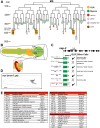
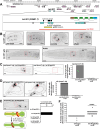
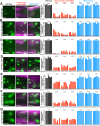

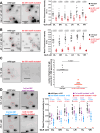
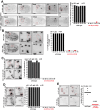
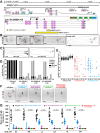

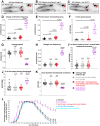
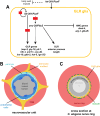



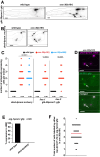

Update of
-
LET-381/FoxF and UNC-30/Pitx2 control the development of C. elegans mesodermal glia that regulate motor behavior.bioRxiv [Preprint]. 2023 Oct 24:2023.10.23.563501. doi: 10.1101/2023.10.23.563501. bioRxiv. 2023. Update in: EMBO J. 2024 Mar;43(6):956-992. doi: 10.1038/s44318-024-00049-w. PMID: 37961181 Free PMC article. Updated. Preprint.
Similar articles
-
Caenorhabditis elegans LET-381 and DMD-4 control development of the mesodermal HMC endothelial cell.Development. 2025 Jul 15;152(14):dev204622. doi: 10.1242/dev.204622. Epub 2025 Jul 29. Development. 2025. PMID: 40728647 Free PMC article.
-
LET-381/FoxF and UNC-30/Pitx2 control the development of C. elegans mesodermal glia that regulate motor behavior.bioRxiv [Preprint]. 2023 Oct 24:2023.10.23.563501. doi: 10.1101/2023.10.23.563501. bioRxiv. 2023. Update in: EMBO J. 2024 Mar;43(6):956-992. doi: 10.1038/s44318-024-00049-w. PMID: 37961181 Free PMC article. Updated. Preprint.
-
The FoxF/FoxC factor LET-381 directly regulates both cell fate specification and cell differentiation in C. elegans mesoderm development.Development. 2010 May;137(9):1451-60. doi: 10.1242/dev.048496. Epub 2010 Mar 24. Development. 2010. PMID: 20335356 Free PMC article.
-
Brn3/POU-IV-type POU homeobox genes-Paradigmatic regulators of neuronal identity across phylogeny.Wiley Interdiscip Rev Dev Biol. 2020 Jul;9(4):e374. doi: 10.1002/wdev.374. Epub 2020 Feb 3. Wiley Interdiscip Rev Dev Biol. 2020. PMID: 32012462 Review.
-
Securing Neuronal Cell Fate in C. elegans.Curr Top Dev Biol. 2016;116:167-80. doi: 10.1016/bs.ctdb.2015.11.011. Epub 2016 Jan 23. Curr Top Dev Biol. 2016. PMID: 26970619 Review.
Cited by
-
Glia in Invertebrate Models: Insights from Caenorhabditis elegans.Adv Neurobiol. 2024;39:19-49. doi: 10.1007/978-3-031-64839-7_2. Adv Neurobiol. 2024. PMID: 39190070 Review.
-
Caenorhabditis elegans LET-381 and DMD-4 control development of the mesodermal HMC endothelial cell.Development. 2025 Jul 15;152(14):dev204622. doi: 10.1242/dev.204622. Epub 2025 Jul 29. Development. 2025. PMID: 40728647 Free PMC article.
-
Molecular profiling of invertebrate glia.Glia. 2025 Mar;73(3):632-656. doi: 10.1002/glia.24623. Epub 2024 Oct 16. Glia. 2025. PMID: 39415317 Free PMC article. Review.
-
Molecular profiling of adult C. elegans glia across sexes by single-nuclear RNA-seq.Dev Cell. 2025 Jun 11:S1534-5807(25)00324-7. doi: 10.1016/j.devcel.2025.05.013. Online ahead of print. Dev Cell. 2025. PMID: 40527319
-
Neurogenesis in Caenorhabditis elegans.Genetics. 2024 Oct 7;228(2):iyae116. doi: 10.1093/genetics/iyae116. Genetics. 2024. PMID: 39167071 Free PMC article. Review.
References
-
- Altun ZF, Hall DH (2016) Handbook of C. elegans anatomy. WormAtlas
-
- Altun-Gultekin Z, Andachi Y, Tsalik EL, Pilgrim D, Kohara Y, Hobert O. A regulatory cascade of three homeobox genes, ceh-10, ttx-3 and ceh-23, controls cell fate specification of a defined interneuron class in C. elegans. Development. 2001;128:1951–1969. - PubMed
MeSH terms
Substances
Grants and funding
LinkOut - more resources
Full Text Sources
Molecular Biology Databases
Research Materials

